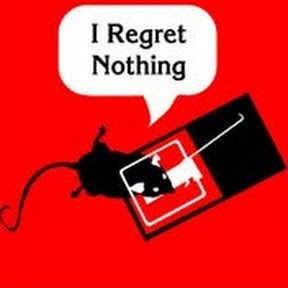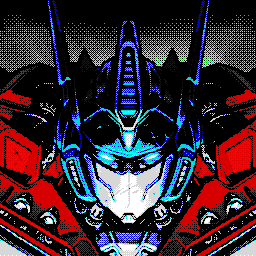For me it was:
Windows (for many years) -> Ubuntu (for a year) -> Arch Linux (for half a year) -> Void Linux (literally 2 days) -> Artix Linux with runit (a month) -> Gentoo Linux (another month) -> Debian (finally, I don’t plan on changing it).
Also, when trying to switch from Gentoo to Debian, I fucked up all my data with no backup.
What was your journey?
EDIT: Added Windows

o Windows 10 | o Linux Mint | |\__ | \ | o Manjaro KDE | | o Fedora KDE | |\__ | | \ x | o Windows 11 | o Windows 11 + Arch Linux | | o Arch Linux | | | | | o Windows 11 + Debian KDE | |hopefully it renders well on your client :D

Man, a monospace fixed size array would be really nice for ASCII art eh? Kinda like a text image. I suppose you could take a screenshot, but then there’s image hosting issues in the future.
Sorry, random idea.

Screenshot woulda been better just so everyone sees the same thing lol. I wasn’t sure what it would look like because on browser it highlighted some things green, and on Voyager it seems to highlight 4+ space indented as gray. No clue what is going on there :D
vim with
:set virtualedit=allgets pretty close being able to “paint” text anywhere… unfortunately i was on my phone and didn’t think to use it
You can also do code block with plain:
```plain Stuff here

Looks great! ~ Jerboa 0.0.67 on LOS 20 (Android 13)

Windows from 1999 until December 2023. Debian since then!

Ubuntu (in VM, a few months) -> Linux Mint (1 year) -> Archlinux (2 years) -> Ubuntu (1 year) -> Fedora (2 years) -> Linux Mint Debian (3 years) -> Debian (5+ years for now)
I have had a desktop PC and a laptop for a few years now. The laptop had Mint (DE) for 2 years longer.
That should be more or less it, makes about 14 years on GNU/Linux now.

DOS -> slack ware Linux -> win 3 -> os/2 warp -> win 98 -> win XP -> osx (several years on Mac) -> win 10 -> Ubuntu 14, 16, 18, 20 -> fedora 34, 35, 36 ,37, 38 -> Debian 12 --> fedora silverblue 40.

Windows 95
Suse Linux
Yoper Linux
Windows XP
Slackware
Windows 10/11
Fedora Linux
“Relapsed” to Windows for a while because I became a graphic designer and running a somewhat current Adobe suite on wine was impossible (it works now).
Slackware has been amazing, but having to built so much stuff from scratch takes too much time nowadays.
And those first Suse years were too rough to keep using it as a daily driver.

-
In the 90’s: Slackware, then RedHat, then Debian, then Progeny (Debian based), then shortly Mandrake (RedHat based)
-
Early 2000’s: RedHat Japanese edition, TurboLinux (because I was in Japan and Japanese IME was almost impossible to get working on non-Japanese distributions)
-
Then I had fun with Gentoo looking at my terminal compiling stuff everyday and fixing broken package because I followed advices to activate crazy compilation flags
-
2004: Ubuntu, that I used for nearly 20 years
-
Last year: switched to Fedora

What happened last year?

Nothing in particular, for the past few years I didn’t like the direction Ubuntu was taking but I stayed because I was too lazy to switch and it didn’t feel that bad.
So I’m not sure exactly what was the last straw, maybe part of it was me getting a Steam Deck, discovering flatpak and understanding how bad snap was compared to it.
The Shakahola Forest Incident, for one thing.

I just realized that I used Ubuntu for 20 years. I might be interested in switching to Fedora. How ist your experience so far?

It just works, just like Ubuntu before they started pushing snap down everyone’s throat (which is what made me switch eventually.)
I had a bad image of RedHat/Fedora’s package management from the time deb was much superior, but no they caught up and are on the same level (I know, it’s probably been a while).
I also like how they mostly package upstream without too many changes. When Ubuntu started upstream was a bit lacking so making changes was necessary to get something that looks like a consistent OS rather than a patchwork of packages, but now it’s no longer needed. Ubuntu is no longer the only distribution with that level of polish.
-

Desktop: Macintosh ( Windows (XP-10) w/occasional Ubuntu dual-boot (various DEs) -> Debian + Gnome
Server: Ubuntu LTS -> Debian
I’ve also had a number of used thinkpads over the years where I mostly ran Xubuntu and crunchbang.
I still boot into Windows every month or so if I need to model something in Rhino (CAD). Couldn’t get it working in Wine and my 12 YO computer isn’t performant enough to run it in a VM. The last thread remaining and waiting to be cut…

Slack, mandriva, Ubuntu, gentoo, arch, xubuntu, knoppix, mint, QubesOS. In that order.
Currently at Qubes and I can’t imagine downgrading to any OS that doesn’t have these VM-level sandboxing features built-in

Windows ->
Fedora Kinoite: A relatively mature atomic/immutable distro combined with excellent security standards and that resembles Windows’ workflow. Unfortunately, it broke almost immediately. Though, to be fair, it was a known issue with the ISO back then. As a newb, however, I couldn’t be bothered with it. ->
Fedora Silverblue: Well…, I didn’t have much of a choice 😜. Or I had to forego Fedora Atomic altogether. However, I actually really enjoyed GNOME’s workflow. I used this as my main system for about year. Until I found a related project… ->
Arch: The memes got me 😅. In all honesty, though, it was mostly curiosity. Still, I didn’t intend to throw away my working Silverblue installation for the sake of quenching my thirst for experiencing Arch. So, as dual boot, I tried to install it. This was pre
archinstall, so it took a couple of tries before I booted into GNOME. However, I guess I did mess up something as I don’t recall ever booting back into that system 😅. So, what if I want Arch, but don’t want to spend more time with the installation… ->EndeavourOS: Yup. I actually enjoyed it. I also took the opportunity to install another DE; KDE. Tried out the hardened kernel. Was able to make Davinci Resolve work, which just caused a lot of trouble on Silverblue. Access to AUR. It was cool, really. And, for some time, I was actually pondering to dismiss Silverblue altogether in favor of EndeavourOS. But, I started to miss the ‘stability’ that I was used to from Silverblue. Though, I don’t exactly recall if it was the fault of being based on Arch, or rather linked/attributed to KDE instead. Regardless, I noticed that (over time) I spend more and more time on Silverblue. At some point, booting into EndeavourOS didn’t work any more. It had broken. I did engage in some troubleshooting efforts, but to no avail… ->
Zorin OS lite: On backup laptop; the poor thing couldn’t run Windows but (even today) it’s still kicking on Linux ->
Nobara: So, I guess I did miss some of the functionality provided by EndeavourOS; running Davinci Resolve being the primary one. But, I didn’t want to pass out of the opportunity to try something else. Back then, Nobara was released relatively recently and was received very positively by the community. And had even a special guide/tutorial to make Davinci Resolve work on AMD devices. Nobara was cool. But, it didn’t feel very special. I actually enjoyed EndeavourOS a lot more. It was mostly utilized for Davinci Resolve and for gaming if Silverblue wasn’t fit for the job (for whatever reason). Unfortunately, even this one broke at some point 😅. I could still boot into it. But, the system just didn’t do what it’s supposed to do. I tried troubleshooting. But, once again, to no avail. ->
uBlue; Silverblue image: Through all that was previously mentioned, I had stability in Fedora Silverblue. It was reliable. I could trust it. Well…, most of the time 😅. Decisions related to
mesaor video acceleration in browsers definitely felt more like misses rather than hits. I can’t blame Fedora as they’re legally restricted. But, shouldn’t we be able to do better? Enter uBlue. It seemed like some black magic shenanigans. The earlier issues would have never occurred (nor did they occur) on uBlue. This ‘managed’ aspect of uBlue was clearly, at least for me, the reason to consider it over regular Silverblue. And so, I parted with regular Silverblue and started using the Silverblue image provided by uBlue. Not long after, I even had my own (hardened) custom image. But, eventually (to be more precise; about half a year after switching to uBlue), keeping up with hardening took up too much effort for me to bear. But, thankfully, I had already found the perfect solution… ->secureblue (based on the Silverblue image): This was Silverblue hardened by someone that actually knows their shit. And, thankfully, I didn’t have to maintain this myself. I used this for a couple of months until the next best thing… ->
secureblue (based on the Bluefin image): Currently on this for I think half a year now. It has just been a lovely experience through and through. Everything I could have asked is provided.

It all started with SuseLinux with KDE2. Then a long while it was Windows only. In 2021 I dabbled with Elementaryos, because it damn looks beautiful. In 2023 then I took the plunge. Started with Garuda Linux. Then KDE Neon then Fedora, then OpenSuse, Fedora Silverblue, then Nobara Linux, Fedora Kinoite, then back to Mint, Garuda and now’ve I settled on Nobara KDE.

Windows -> RedHat -> Windows -> Gentoo -> Ubuntu -> RHEL -> Ubuntu -> Debian -> Arch

Mint -> Arch

Windows (2015-2021) --> Manjaro (2 Weeks) --> Arch (2021-today)

Slackware(1995?), Yggdrasil, Redhat/Fedora/Mandrake, SuSE, Debian/Ubuntu/Mint
Probably some others I have forgotten, and there was a lot of back and forth at various times but I settled on Debian based because at the time APT was the best package manager. I mostly use Mint or straight Debian now because familiarity makes it the simplest for me after all these years.
not Linux but also Solaris, SunOS, & AIX

I tried one distro and now the other distros confuse and scare me.

